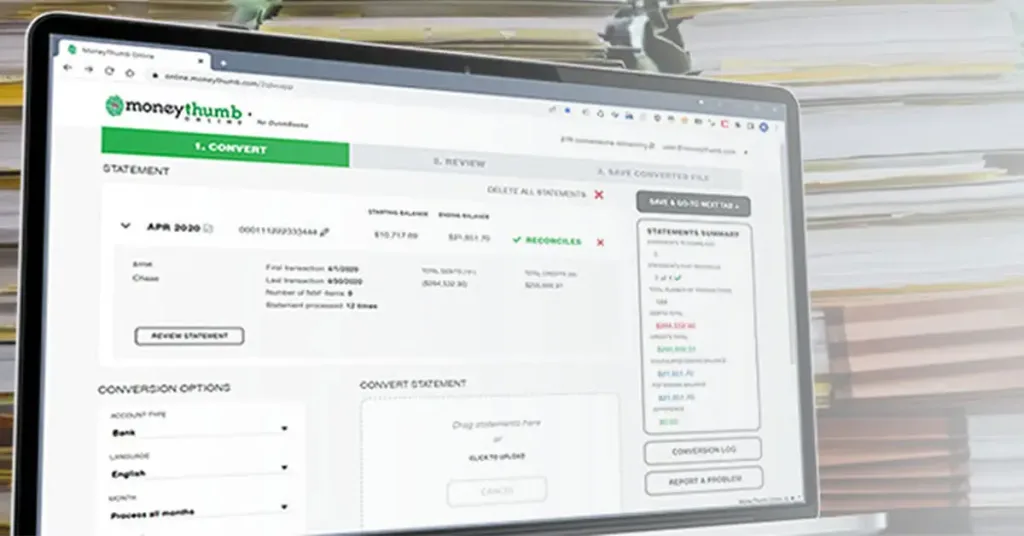If you’re accounting for a merchandising business, you’re likely already familiar with logging and filing transactions. However, if your client is acting as the buyer or seller for a transaction taking place with a company in a different country, there are a few extra things you’ll need to know to balance the books.
This guide will walk you through the differences you need to familiarize yourself with, and the procedure for accounting for transactions with overseas buyers and sellers. If you’re learning on the job, we’ve included some simple tips for the best practice But even if you don’t have clients who conduct overseas transactions yet, it’s still worth knowing about the differences for when you snag those big, international clients.
What Stays The Same?
Structure of Reports
When logging transactions with an overseas buyer or seller, you should maintain a journal of the various stages of the transaction just as you would for a transaction with a domestic company. The transaction is still considered complete only when payment has been made and proof of payment has been received. It should be filed as domestic transactions usually are, and included in the profit report as normal.
Regulations
You don’t need to follow the accounting regulations for the country where the other side of the transaction is taking place. As long as your reports correspond to US regulations and the needs of your domestic client, overseas transactions do not pose any administrative differences to the usual way you record transactions.
What Changes?
Retrieving Information
As far as maintaining a journal of the transaction is concerned, dealing with an overseas client can mean communication is a little more strained. This may mean that you need to wait longer for the necessary information from the overseas buyer/seller to complete your work. Make sure that you are in regular receipt of updates and maintain contact with the buyer’s/seller’s accountant if necessary. Copies of statements, invoices, and receipts are still needed.
Currency
The main cause of differences in accounting that take place as a result of transactions with overseas businesses is currency. More specifically, translating foreign currency to dollars and the ever-changing exchange rates. To make sure your figures are as accurate as possible, you’ll need to log and record transactions in US dollars so they correspond with total expenditure and profit. However, you may pay the supplier or be paid by the buyer in their currency, meaning you’ll need to do a few calculations and consult with your client on the best practice for overseas contracts.
Who Pays What?
When acting as the buyer or seller for an overseas contract, your client’s business and the buyer/seller will decide what currency the transaction takes place in. If the transaction takes place in dollars, this is much easier for you as the accountant, as the transaction can be logged as normal. If the transaction is taking place in a foreign currency, however, fluctuating exchange rates mean you’ll need to calculate how much your client will have paid in dollars. Therefore, while the transaction is denominated in foreign currency, it will be recorded in dollars.
Important Terms To Know…
When the transaction is taking place in a foreign currency, there are a few variables that will affect the final amount payable either to or by your client. Here are some important terms to familiarize yourself with before we dive into the process of translating and recording a foreign currency transaction.
Direct Exchange Rate - The number of dollars it would take to purchase one unit of a foreign currency. For example, the direct rate for conversions from the British pound to US dollar is 1.2, which means to purchase £1, you’ll need 1.20$. Or, the direct exchange rate for Japanese yen to US dollar is 0.07, meaning to buy 1¥ you’ll need 7 cents.
Indirect Exchange Rate - The indirect exchange rate is the reverse of the above, so how much a foreign currency is worth against 1$. To find the indirect exchange rate, divide 1 by the direct exchange rate. For example, if the direct exchange rate for the yen is 0.07, the indirect exchange rate will be 1/0.07 = 14.28. This means you’ll need 14.28¥ to buy 1$.
Spot Rate - The current direct exchange rate is ‘on the spot’. As the spot rate is subject to constant change, some transactions in foreign currency can be recorded at that very moment. If your client does not engage in any contracts to determine the price of exchange, they will be subject to the ‘floating rate’, i.e the changeable spot rate.
Forward/Future Rate - This is the exchange rate on a future date. While we can’t know how much a currency will be worth in the future and this poses some opportunity for risk when completing overseas transactions. When you buy on the forward market you can pay a fee to lock in a set price.
Overseas Transactions and Risk
If your client has chosen to carry out a transaction that is denominated in a foreign currency, they will open themselves to risk. Due to fluctuating exchange rates, depending on how long there is between purchase and settlement, your client may stand to lose (or gain) a significant deal of their dollar’s worth.
When purchasing or selling in a foreign currency:
- If your client is exporting goods and the direct exchange rate increases, meaning the value of the dollar goes down in comparison to the foreign currency, this results in a gain as you’ll receive more of the foreign currency. Therefore, the accounts retrievable will increase.
- If your client is paying to import goods and the value of the dollar drops, the accounts payable will increase as the dollar buys less.
- Alternatively, if the dollar strengthens and your client is exporting goods, this will result in the accounts retrievable decreasing.
- If they are importing goods and the dollar strengthens, since the dollar buys more, this will result in a decrease in the accounts payable.
Forward exchange contracts can be highly beneficial in mitigating this risk. Forward exchange contracts allow your client to pay a fee on the day of booking, with the agreement that the payment for the currency change will correspond with the rate on a specified date. Essentially, you are selling the risk of currency fluctuations to the other party in the forward contract. These contracts apply to currency exchanges, and not to the price of goods that your client has agreed to receive/pay to an overseas company.
How To Account For Foreign Currency Transactions
Here is a step-by-step guide to accounting for international transactions that are taking place in a foreign currency.
- Record the Value
On the booking date, record the value of the transaction in dollars and the spot rate at the time of the transaction (assuming no contracts have been set up). Using the exchange rate, convert the value amount in the foreign currency into dollars. Debit the relevant accounts, then credit accounts payable with the dollar amount.
- Make Payments
On the settlement date, make the payment and record any loss or gains on the original exchange rate with the spot rate. Credit the financial account with the amount paid, debit the accounts payable with the original price, and debit the ‘loss/gain on the foreign exchange account with the recorded difference.
- Settle Changes in Value
At the end of the accounting year, calculate the dollar amount of any losses or gains on the foreign exchange using the relevant exchange rate if you have not already done so. Record these as gains or losses and log the entry to accounts payable/receivable as appropriate.
Example Overseas Transaction
For this example, we will be dealing with an export (seller) company that has suffered a loss subject to floating exchange rates.
Blue Penguin LTD is a company based in the US selling refrigerators. They sell refrigerators to a buyer in Germany, and the transaction will take place in euros. The total transaction will have a price of €14,100, with the indirect exchange rate at 0.94. The total price in dollars on the booking date is $15,000. Blue Penguin records the transaction as follows:
| Debit | Credit | |
| Accounts Receivable | 15,000 | |
| Sales | 15,000 |
However, by the payment date, the exchange rate has changed. The German buyer pays €14,100, but because the indirect exchange rate is now sitting at 0.99, this means that Blue Penguin only receives the equivalent of $14,200. This is a loss of $800. Blue Penguin records this loss as follows.
| Debit | Credit | |
| Sales | 14,200 | |
| Foreign Currency Exchange Loss | 800 | |
| Accounts Receivable | 15,000 |
Conclusion
The main difference when accounting for overseas buyers and sellers comes as a result of currency. For transactions that take place in foreign currency, the main challenge is accurately translating this currency into dollars, and recording losses or gains on the currency exchange if the spot rate is being used for exchanges. These losses and gains must be recorded separately as foreign exchange losses/gains and debited/credited correctly. Once this process has been completed, the transactions can be logged as usual and included in financial reports using the corresponding dollar amounts. Any losses or gains should be reported in the profit and loss reports.
Sources
https://smallbusiness.chron.com/account-foreign-currency-transactions-56341.html
https://www.accountingtools.com/articles/foreign-exchange-accounting.html
https://www.asiabookkeeping.com/document-flows-between-buyers-and-sellers/
https://www.iasplus.com/en-gb/standards/ias/ias21
https://www.withum.com/resources/accounting-for-foreign-exchange-transactions/





















Add comment